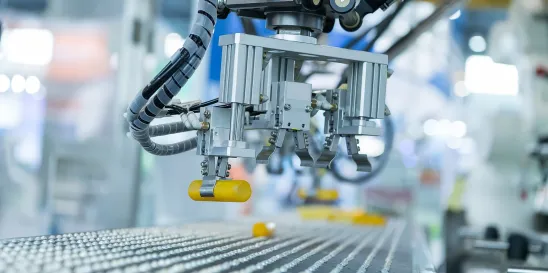Artificial Intelligence (AI) systems are becoming an increasingly important part of our lives and are affecting almost every industry. In compliance with section 5.2(c)(i) of the President’s October 30, 2023 Executive Order (EO) 14110, titled “Safe, Secure, And Trustworthy Development and Use of Artificial Intelligence (AI)”, the US Patent and Trademark Office (USPTO) has issued Guidance entitled Inventorship Guidance for AI-Assisted Inventions, effective from February 13, 2024, to address what happens when an invention is the result of a human and AI collaboration (AI-assisted inventions).
The Guidance, for USPTO examiners and applicants, addresses inventorship and the use of AI, including generative AI, in the inventive process. The Guidance provides illustrative examples in which AI systems play different roles in the inventive process, to show how the USPTO will analyze inventorship issues.
The Guidance clarifies that AI-assisted inventions can receive patent protection if a human being plays a significant role in the invention’s conception. The Guidance acknowledges the importance of human inventors in AI-assisted inventions, so that the patent system can continue to incentivize and reward human ingenuity.
The USPTO’s Guidance aligns with the US Copyright Office’s (USCO) recent guidance entitled “Works Containing Material Generated by Artificial Intelligence” on copyrightable materials generated using AI (discussed here). Both the USPTO and the USCO recognize the interplay between AI and human creativity.
The Guidance also considers the Federal Circuit’s 2022 decision in Thaler v. Vidal, which held that “only a natural person can be an inventor,” and consequently, that an AI system cannot assume that role. In the decision, the Federal Circuit pointed to 35 USC 100(f), which defines an “inventor” as “the individual or, if a joint invention, the individuals collectively who invented or discovered the subject matter of the invention.” The Federal Circuit emphasized that, based on Supreme Court precedent, the term “individual” in statutes typically refers to a human being, unless Congress explicitly indicates otherwise. In this context, the Patent Act provides no such indication, reinforcing the conclusion that an “individual” within the Patent Act refers exclusively to a natural person.
The Guidance acknowledges that an applicant’s failure to name the inventors in a patent application can be grounds for rejection under the US Patent Act (35 USC §§ 1 et seq.), including 35 USC 101 and 35 USC 115. The statutory requirements of 35 USC §§115 and 116 for an applicant to name the inventor or joint inventors, and to require each to sign an oath or declaration, applies only to the natural persons who invented or discovered the claimed invention. These statutes do not extend to contributions provided by an AI system or any other advanced system. Consequently, the inability to list an AI system used in creating an invention as a joint inventor does not render the invention unpatentable because of improper inventorship.”
The Guidance acknowledges that assessing a natural person’s contribution to AI-assisted inventions can be difficult and that no bright-line test exists. Instead, Examiners will evaluate the level of human ingenuity, creativity, and problem-solving involved. If the human’s role is pivotal, the human will qualify as an inventor. These inventorship determinations are guided by the factors set forth in the Federal Circuit’s 1998 decision in Pannu v. Iolab Corp, , under which the following list of principles can help inform application of the Pannu factors in AI-assisted inventions:
- A natural person “contribute[s] significantly to the AI-assisted invention”;
- The natural person “construct[s]… [an AI] prompt… [because]of a specific problem to elicit a particular solution from the AI system”;
- The natural person “take[s] the output of an AI system and makes a significant contribution to the output to create an invention”;
- The natural person “design[s], build[s], or train[s] an AI system… [because] of a specific problem to elicit a particular solution,” where “the designing, building, or training of the AI system is a significant contribution to the invention created with the AI system”; and
- A natural person “simply owning or overseeing an AI system that is used in the creation of an invention, without providing a significant contribution to the conception of the invention, does not make that person an inventor”.
A USPTO website section entitled “AI-related resources” provides illustrative examples that apply these Pannu factors. One example pertains to a transaxle for a remote car, while the other relates to a therapeutic compound for treating cancer. Both examples emphasize the inventorship role of natural persons who utilize AI during the invention process.
While AI systems cannot be inventors, individuals who contribute significantly to the invention—whether by shaping the AI’s parameters, refining its output or actively participating in the creative process—can qualify as inventors. The key lies in the individuals’ appreciation of the invention’s significance and their substantial contribution to its development.
The USPTO recognizes that inventorship identification can present issues with respect to a patent applicant’s compliance with the duty of disclosure, obliging an applicant to disclose information to the USPTO that either:
- establishes a prima facie case of unpatentability due to improper inventorship; or
- contradicts an applicant’s position when challenging an inventorship rejection or asserting inventorship.
In applications involving AI-assisted inventions, this information might include evidence that a named inventor did not significantly contribute to the invention because an AI system made the purported contribution(s).
Takeaways
The USPTO has forged a path through the intricate landscape of AI-assisted inventions. Patent practitioners should use the USPTO’s Guidance in working with clients, safeguarding AI innovations while keeping sight of the indispensable role of humans as inventors in patent applications.
EO 14110 orders the USPTO Director to issue additional guidance to examiners and applicants within about five months of the current guidance, and to continue to consult with the Copyright Office on ssues related to copyright and AI. Watch this space for updates.






 />i
/>i

